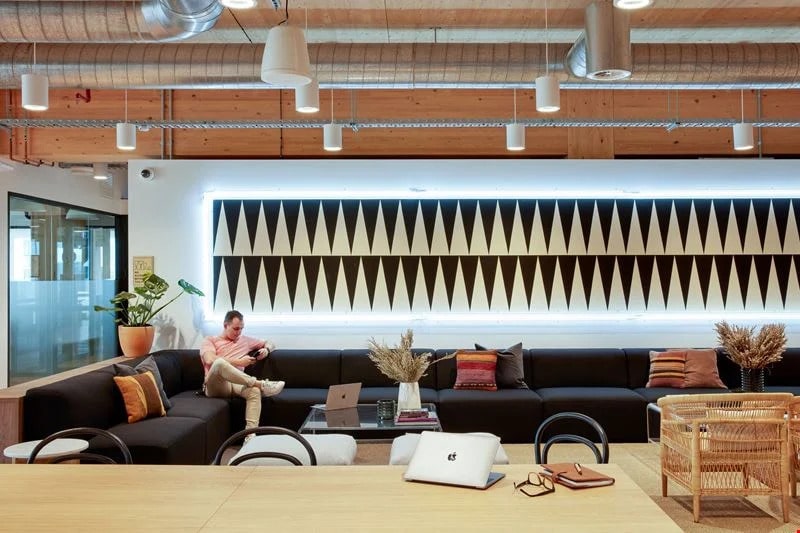Businesses are enhancing their digital presence through mobile apps. Just look at the statistics: roughly 62% of businesses already have an app or are in the process of developing one.
In the coworking sector, a staggering 83% of members prefer to use mobile apps to seamlessly manage the coworking services they avail of. This shows how crucial apps have become for coworking space owners and managers to meet their members’ expectations.
However, simply building any app is not enough. You need a good one that resonates with your target audience and delivers real value throughout. You also need an excellent launch strategy that ensures your members know about your app.
Whether you’re a coworking space manager or owner, we’ll show you how to launch a mobile app effectively after building it for your coworking space business. Let’s dive in!
1. Market research and analysis
Conducting thorough market research is the first step. This step will give you insights into your target users, competitors, and your unique selling point.
– Identify your target audience
A deep understanding of your target audience–primarily your coworking space members—will ensure your coworking space app meets real user needs. It will further give you valuable audience insights to guide every aspect of your app’s features, design, and marketing.
So, do the following:
- Study your existing customer base through surveys, interviews, market trends, and analytics.
- Build personas or user profiles
- Listen to social media discussions around coworking wants/frustrations.
This data-driven approach ensures that your app functions in a way that meets your target market’s requirements.
– Analyze the competition
You should also thoroughly evaluate other coworking space apps on the market. This competitive analysis will reveal gaps, areas for improvement, and opportunities to differentiate your offering.
Use a spreadsheet to compare coworking space competitor apps across key factors like core features, smartphone user experience, marketing strategies used, and customer satisfaction.
You may also want to try out competitor apps to see how they onboard members, handle booking workflows, and incorporate community features. Take note of what you like and don’t like. Use the spreadsheet to merge your findings and pinpoint underserved user needs that your app could fulfill.
– Determine the unique value proposition
Armed with a deep understanding of your audience and competition, it’s time to craft a unique value proposition (UVP).
Your app’s UVP should emphasize its advantages. Maybe your app will have innovative features, a better user experience, or a unique approach to coworking space booking?
A strong value proposition helps ensure the coworking space app stands out among competitors.

2. Conceptualization and design
With a clear understanding of the market, it’s time to transform those insights into a compelling app concept with an intuitive design. Let’s see how to navigate this make-or-break process.
– Develop a comprehensive app concept
Your app concept defines what your app is and its core functionality.
Determine your app’s purpose. Why are you offering this coworking space app in the first place?
Next, outline the key features required to fulfill these goals. For a coworking space app, these could include workspace booking and reservation tools, integrated payment gateways, community networking features, and coworking space amenitie or services dashboards.
Ensure the concept accounts for seamlessly integrating with existing operational tools and systems to optimize efficiency.
Finally, your app developer can map out technical requirements like server access, operating system, infrastructure needs, and more to guarantee a solid foundation. Overall, a comprehensive app concept aligned with your objectives positions you for success.
– Create wireframes and prototypes
A wireframe is a two-dimensional sketch that shows the overall look of your coworking app upon development. Think of it as a visual guide of how your application will work. It shows the key screens and interface elements of the app.
Have your app designers create this wireframe. This will serve as a guide to create interactive app prototypes, which will bring the co-working app to life.
– Focus on intuitive navigation
Intuitive navigation means that the controls, menus, icons, and UI elements of the app are self-explanatory and flow logically. Even if an app has many features, future users will abandon it if they have trouble finding the information they need.
To deliver intuitive navigation, it’s best to stick with platform arrangements and design patterns that people are accustomed to. Use common gestures, symbols, and a clear layout to create easy-to-follow user paths.
Ask your app developer to use the widely recognized hamburger menu icon and gesture to access navigation menus. Additionally, have them organize content with clear titles and gradually reveal information to enhance user understanding.
3. Development and testing
Turning your coworking space app idea into reality requires careful development planning and extensive testing. Here are some key tips for nailing this crucial stage:
– Choose the right development approach
How you build your coworking space app impacts its capabilities, performance, and usage. There are several app development approaches used by development teams.
Each approach offers benefits:
- Go with a cross-platform app approach if you have a limited budget and want your app to reach the widest audience possible.
- Native app development is ideal when you’re targeting a specific platform’s user base. It requires deep device integration and sufficient funding.
- Progressive web apps are best for basic apps that need wide accessibility across platforms and device types.
- Consider hybrid development when you need a balanced mix of platform integration and cross-platform reach.
Specify your goals and the audience you’re targeting to your app developer, then have them suggest the best development approach.
– Build a minimum viable product (MVP)
Instead of developing the complete application at the beginning, ask your app designer to create a Minimum Viable Product (MVP) first. This version of your app consists of only the essential features required to validate your idea.
The MVP helps you launch the coworking space app quickly, gather genuine feedback from potential users, and make necessary changes before investing more resources into the final product.
– Conduct extensive testing
Conduct comprehensive testing to ensure users have a seamless experience with your coworking space app.
Your app designer can use automated testing tools like Appium or TestGrid to thoroughly examine your app’s functionality, user paths, performance, and security across different devices.
Manual testing, especially usability assessments, is also recommended to confirm that your app has intuitive navigation.
This approach helps identify issues before launch, ensuring a smooth app user experience from day one.

4. Launch strategy
With development and testing complete, it’s time to plan a powerful coworking space app launch strategy to drive awareness and adoption. Without it, even the best app can fail to reach and resonate with its intended audience.
Don’t know how to launch a mobile app? Here are some marketing strategies to consider incorporating into your launch plan:
- Create a dedicated landing page or website to showcase your app and promote it on social media accounts and via paid advertising.
- Leverage AI templates for generating high-ranking detailed descriptions and release notes efficiently.
- Optimize app listing across major app stores using App Store Optimization (ASO) techniques, focusing on relevant keywords and visually appealing graphics.
- Increase exposure and organic traffic by using paid advertising and SEO tactics, such as optimizing your app’s website for relevant keywords.
Additionally, you can specify as a strategy a possible partnership with a good SaaS SEO agency. This will ensure expert search engine optimization of your app site for online visibility.
Here’s another tactic worth including in your launch plan: leveraging incentives.
Incentives provide a tangible reason for your coworking space members to download and engage with your new app. You can offer mobile app launch promotions like coupons, referral bonuses, or discounts in your marketing materials.
These rewards will encourage initial downloads while ensuring word-of-mouth marketing.
As a final tip, consider networking with influencers and online communities as a tactic to implement for launch day. You can promote your app to them to further increase its visibility and recognition.
5. Post-launch optimization and growth
At this point, your co-working space app has been launched. But the work is not over yet. Ensuring your app caters to users is a continuous process.
– Monitor KPIs
To ensure your app meets user needs and business goals, it’s essential to continuously monitor and analyze key performance data. This involves collecting, measuring, and closely studying metrics like user engagement, conversion rates, user retention rates, user acquisition and growth rates, app downloads, and revenue metrics.
You or your app designer can also use app analytics tools like Firebase, Data.ai, or Apple Developer to easily track, visualize, and draw user insights.
– Gather feedback to optimize the app’s performance
Monitor customer reviews (negative and positive reviews), send surveys, and conduct user testing and social listening to gather feedback.
Ask your developer to incorporate the user feedback into future app updates to demonstrate that you value your members’ opinions.
– Explore opportunities for expansion
Lastly, treat your co-working app as an investment. Seek opportunities for growth on your own. For instance, why not expand your coworking space app user base to include the staff, if you haven’t done so yet? Or maybe there is a wide range of features you can make more user-friendly for current customers.
Always stay updated on trends you can jump on to continually enhance the user experience and expand your app’s reach.
Conclusion
Mobile apps are not just a passing fad, what with humans’ increasing reliance on technology. That means now is the golden time to jump on the coworking space mobile app bandwagon.
Conduct research, develop an intuitive design, take a systematic development approach, and then launch strategically. To ensure the app continues to meet market demands, seek more feedback and optimize it continuously.
Now that you know how to launch a mobile app after creating it successfully, go forth and do just that. You and your coworking members will reap all the benefits.









